Iyad Ag Ghaly
Emir
Jama’at Nusrat al-Islam wal Muslimeen (JNIM), meaning “The Support Group for Islam and Muslims,” is an al-Qaeda affiliated group based in Mali that has in recent years expanded its operations to neighboring countries such as Burkina Faso, Niger, and Senegal.
March 2, 2025: JNIM militants ambush soldiers in Ekade Malane area in northern Niger, killing 11.“Jihadist Ambush Kills 11 Soldiers in North Niger,” Defense Post, March 2, 2025, https://thedefensepost.com/2025/03/02/jihadists-kill-north-niger/.
Jama’at Nusrat al-Islam wal Muslimeen (JNIM), meaning “The Support Group for Islam and Muslims,” is an al-Qaeda affiliated group based in Mali that has in recent years expanded its operations to neighboring countries such as Burkina Faso, Niger, and Senegal.Ryan CK Hess, “Lassoing the Haboob: Countering Jama’at Nasr al-Islam wal Muslimin in Mali, Part I,” Journal of Indo-Pacific Affairs 3, no. 4 (Winter 2020): 133, https://media.defense.gov/2020/Nov/23/2002540355/-1/-1/1/DO_HESS%20PART%201.PDF Rahma Bayrakdar, “Al Qaeda’s Growing Threat to Senegal,” Critical Threats, February 18, 2021, https://www.criticalthreats.org/analysis/al-qaedas-growing-threat-to-senegal. As a formal al-Qaeda affiliate in Africa, JNIM is dedicated to dismantling regional governments and implementing sharia (Islamic law) in areas where it operates.“Currently listed entities,” Government of Canada, https://www.publicsafety.gc.ca/cnt/ntnl-scrt/cntr-trrrsm/lstd-ntts/crrnt-lstd-ntts-en.aspx.
The jihadist group was officially founded on March 2, 2017, when the Sahara branch of al-Qaeda in the Islamic Maghreb (AQIM)—a formal al-Qaeda affiliate that operates primarily in Algeria, Mali, Mauritania, Libya, Tunisia, and Niger—merged with local Salafist groups Ansar al-Dine (AAD), al-Mourabitoun, and Macina Liberation Front (MLF or Katiba Macina). Iyad Ag Ghaly, the former emir of AAD, was announced as the new group’s leader. Thomas Joscelyn, “Analysis: Al Qaeda Groups Reorganize in West Africa,” Long War Journal, March 13, 2017, https://www.longwarjournal.org/archives/2017/03/analysis-al-qaeda-groups-reorganize-in-west-africa.php.
Ghaly founded Ansar al-Dine (AAD) in December 2011, after AQIM leader Abdelmalek Droukdel sought to expand AQIM activities into the Sahel, specifically in northern Mali.“Iyad Ag Ghali,” United Nations Security Council, last updated September 23, 2014, https://www.un.org/securitycouncil/sanctions/1267/aq_sanctions_list/summaries/individual/iyad-ag-ghali. AAD—strengthened by AQIM’s continued military, financial, and logistical support—quickly proved formidable as it captured a number of towns, including Tessalit and Timbuktu, between January and April 2012.“IYAD AG GHALI,” United Nations Security Council, February 25, 2013, https://www.un.org/securitycouncil/sanctions/1267/aq_sanctions_list/summaries/individual/iyad-ag-ghali. Another active AQIM splinter group, al-Mourabitoun, carried out the November 2015 lethal attack on the Radisson Blu hotel in Bamako, Mali’s capital. Al-Mourabitoun has since taken the lead in AQIM operations, including a high-profile attack on a U.N. base in northern Mali in June 2016.Conor Gaffey, “Peacekeeping in Mali: The U.N.’s Most Dangerous Mission,” Newsweek, June 12, 2016, http://www.newsweek.com/mali-un-mission-northern-mali-conflict-aqim-africa-peacekeeping-468907./span> Additionally, in early 2017, al-Mourabitoun established ties with local Libyan tribes and marginalized groups to further expand its operations into Libya.“Challenges in Countering Terrorism in Libya,” Joint open briefing of the Counter Terrorism Committee, the 1267/1989/2253 ISIL (Da’esh) and Al-Qaida Sanctions Committee, and the Libya Sanctions Committee, June 22, 2017, https://www.un.org/sc/ctc/wp-content/uploads/2017/06/Concept-Note-Joint-open-briefing-on-Libya-22-Jun-17.pdf.
The formation of JNIM represented al-Qaeda’s new emphasis on “unity” in order to expand the operational and geographical capacities of the organization and successfully implement sharia law in the Sahel region.Thomas Joscelyn, “Analysis: Al Qaeda Groups Reorganize in West Africa,” Long War Journal, March 13, 2017, https://www.longwarjournal.org/archives/2017/03/analysis-al-qaeda-groups-reorganize-in-west-africa.php; Lina Raafat, “The Schism of Jihadism in the Sahel: How Al-Qaeda and the Islamic State are Battling for Legitimacy in the Sahelian Context,” Middle East Institute, October 13, 2021, https://www.mei.edu/publications/schism-jihadism-sahel-how-al-qaeda-and-islamic-state-are-battling-legitimacy-sahelian. Strategically speaking, JNIM boasts an expansive operational cache as the component groups have honed various skill sets as well as built geographical and local knowledge. According to the Institute for Security Studies, the merger provided nascent groups, such as the Mali-based Macina Liberation Front led by Amadou Kouffa, the chance to learn from more militarily seasoned groups like al-Mourabitoun.Illiam Assanvo and Ibrahim Maïga, “Mali’s jihadist merger: desperate or dangerous?,” Institute for Security Studies, April 3, 2017, https://issafrica.org/iss-today/malis-jihadist-merger-desperate-or-dangerous.
In the March 2017 announcement of JNIM’s founding, Ghaly affirmed his allegiance to Abdelmalek Droukdel, the emir of AQIM; Ayman al-Zawahiri, al-Qaeda’s emir; and Haibatullah Akhundzada, the Taliban’s overall leader.Thomas Joscelyn and Caleb Weiss, “Analysis: Islamic State Claims Al Qaeda Started a War in West Africa,” Long War Journal, May 8, 2020, https://www.longwarjournal.org/archives/2020/05/analysis-islamic-state-claims-al-qaeda-started-a-war-in-west-africa.php; “Country Reports on Terrorism 2019,” U.S. Department of State, accessed August 15, 2022, https://www.state.gov/reports/country-reports-on-terrorism-2019/#AAD; Hauke Waszkewitz, “Jihadism’s Staying Power in North Africa,” Global Risk Insights, March 20, 2018, https://globalriskinsights.com/2018/03/aqim-staying-power-north-africa-al-qaeda. In his role as JNIM emir, Ghaly stated in an April 3, 2017 interview with al-Qaeda’s weekly al-Massar publication that France was his “historic enemy” as it threatened al-Qaeda and its allies as “agents who occupy our lands, attack our religion, and steal our wealth.”Malek Bachir, “France Is Our First Enemy, Says ‘Emir&srquo; of New al-Qaeda Affiliate,” Middle East Eye, April 7, 2017, Caleb Weiss, “Al Qaeda Maintains Operational Tempo in West Africa in 2017,” Long War Journal, January 5, 2018, https://www.longwarjournal.org/archives/2018/01/al-qaeda-maintains-operational-tempo-in-west-africa-in-2017.php. As of 2022, violence in northern and central Mali has increased more than 300 percent since 2017. Accordingly, media sources regularly cite JNIM or an affiliated terrorist group as the culprit for much of the violence in the area.Ryan CK Hess, “Lassoing the Haboob: Countering Jama’at Nasr al-Islam wal Muslimin in Mali, Part I,” Journal of Indo-Pacific Affairs 3, no. 4 (Winter 2020): 128, https://media.defense.gov/2020/Nov/23/2002540355/-1/-1/1/DO_HESS%20PART%201.PDF.
Furthermore, as JNIM gained increasing influence across the Sahel, the group has found itself in conflict with ISIS. When ISIS lost its territorial caliphate in Iraq and Syria, JNIM took advantage of ISIS’s seemingly weakened position among the wider extremist nexus and asserted more dominance throughout the Sahel. Given the power struggle between the two groups, JNIM and ISIS have attempted to position themselves as alternatives to the Malian government, which has been criticized for severely neglecting the needs of the Malian public since 2012, following the Tuareg rebellion.Lina Raafat, “The Schism of Jihadism in the Sahel: How Al-Qaeda and the Islamic State Are Battling for Legitimacy in the Sahelian Context,” Middle East Institute, October 13, 2021 https://www.mei.edu/publications/schism-jihadism-sahel-how-al-qaeda-and-islamic-state-are-battling-legitimacy-sahelian.
Since its formation, JNIM has continually clashed with French counterterrorism forces in the Sahel region, deployed under Operation Barkhane—France’s anti-terror mission in Burkina Faso, Mali, Chad, Niger, and Mauritania from 2014 until 2022. One of the notable clashes occurred in February 2018 when French forces launched three simultaneous raids on JNIM forces and their affiliates in northern Mali, killing over 20 jihadi fighters and six JNIM leaders.“Mali: Al-Mourabitoun Commander and Associates Killed amidst Barkhane Operation near Tabankort,” Menastream, archived in the Internet Archive, August 8, 2018, https://web.archive.org/web/20220208081325/https://menastream.com/mali-mourabitoun-barkhane-tabankort. In response, JNIM militants attacked the French embassy and army headquarters in Burkina Faso’s capital. JNIM has also targeted the U.N. Multidimensional Stabilization Mission in Mali (MINUSMA) and the G5 Sahel Joint Force, a military counterterrorism partnership between Burkina Faso, Mali, Mauritania, Niger, and Chad. In June 2018, JNIM launched the first attack on the headquarters of the G5 Sahel Joint Forces in Sévaré, Mali.“Jamaat Nusrat al-Islam wal Muslimeen,” Center for International Security and Cooperation, Stanford University, accessed August 6, 2022, https://cisac.fsi.stanford.edu/mappingmilitants/profiles/jamaat-nusrat-al-islam-wal-muslimeen#:~:text=Jamaat%20Nusrat%20al%2DIslam%20wal%20Muslimeen%20(JNIM)%2C%20also,Macina%20Liberation%20Front%20(MLF); Caleb Weiss, “Al Qaeda Branch in Mali Claims Burkina Faso Attacks,” Long War Journal, March 3, 2018, https://www.longwarjournal.org/archives/2018/03/al-qaeda-branch-in-mali-reportedly-claims-burkina-faso-attacks.php; “Al-Qaeda-Linked Support Group Claimed Attack on Mali HQ of G5 Sahel Force,” Africa News with Agence France-Presse, June 30, 2018, https://www.africanews.com/2018/06/30/al-qaeda-linked-support-group-claimed-attack-on-mali-hq-of-g5-sahel-force.
On March 12, 2020, JNIM released a statement claiming the group would be willing to engage in dialogue with the Malian government, on the condition that French troops and the U.N. peacekeeping mission withdraw from the country. The statement came after a February 2020 announcement by former Malian President Ibrahim Boubacar Keïta, who claimed he had sent his high representative, Dioncounda Traoré, to central Mali to initiate communication with jihadist groups, in the hopes of achieving a ceasefire. The militants Traoré spoke to allegedly included Ghaly and Amadou Kouffa.Zeenat Hansrod, “Mali’s Jihadists Demand French Withdrawal as Condition for Talks,” Radio France Internationale, March 12, 2020, https://www.rfi.fr/en/international/20200312-mali-jihadists-demand-france-withdrawal-as-conditions-for-dialogue-anti-french-sentiment-ibk; Sirwan Kajjo and Salem Solomon, “Mali Seeks to Negotiate with Jihadists in Efforts to End Violence,” Voice of America, February 23, 2020, https://www.voanews.com/extremism-watch/mali-seeks-negotiate-jihadists-efforts-end-violence. However, authorities from France—which had more than 5,000 troops in the country at the time—advised Bamako against negotiating with the jihadists.Nicolas Pinault, “France at Odds with Mali Plan to Dialogue with Jihadists,” Voice of America, November 23, 2020, https://www.voanews.com/a/africa_france-odds-mali-plan-dialogue-jihadists/6198713.html.
As negotiations between the terror group and the central government came to a standstill, Bamako asserted an independent position in is fight against JNIM, withdrawing from the G5 Sahel on May 15, 2022. Bamako claimed the reason it sought to withdraw from the group was the lack of progress in the fight against JNIM militants and other al-Qaeda and ISIS linked groups. The move led to international criticism, with the U.N.’s top political official for Africa, Assistant Secretary-General Martha Pobee, calling the decision “unfortunate and regrettable.”Edith M. Lederer, “UN: Mali pullout from counterterrorism force `unfortunate’,” Associated Press, May 18, 2022, https://apnews.com/article/russia-ukraine-politics-niger-united-nations-africa-3ce881d81189212b54aab2954b352206; “Mali's military junta pulls out of regional G5 Sahel force,” Reuters, May 15, 2022, https://www.reuters.com/world/africa/malis-military-junta-pulls-out-regional-g5-sahel-force-2022-05-15/. Given Mali’s decision to leave the G5 Sahel and France’s complete military withdrawal from the country in August 2022, Mali is now contending with an intractable conflict as JNIM and competing extremist groups continue to relentlessly launch attacks on Malian security forces and foreign troops stationed in the country.“France Completes Mali Pullout,” Defense Post, August 15, 2022, https://www.thedefensepost.com/2022/08/15/france-mali-pullout/.
Further providing ammunition to JNIM’s ambitions for increased support and legitimacy among the Malian public was Mali’s decision to partner with mercenaries from the Russian Wagner Group to combat AQIM and JNIM fighters. Following the deployment of around 1,000 Wagner mercenaries, accusations of indiscriminate killings were alleged by the U.N. and the United States (U.S.) in April 2022. Accordingly, reports circulated that more than 300 civilians were killed following a counterterrorism operation in central Mali’s Moura area. According to media sources, “Wagner’s operations are mainly located in central Mali and mainly target the Fulani community, of which JNIM presents itself as the protector.” JNIM has capitalized on these accusations with their propaganda framing the intentions of Bamako and its Kremlin-affiliated partners as an “ethnic war against Muslims.”“Wagner 'Atrocities' Give Mali Jihadists Ammunition for Propaganda,” Agence France-Presse, November 12, 2022, https://www.voanews.com/a/wagner-atrocities-give-mali-jihadists-ammunition-for-propaganda-/6832144.html.
JNIM adheres to the Salafi strain of Islam followed by the al-Qaeda network. Like AQIM, JNIM perceives all non-Islamist governments as illegitimate and, accordingly, seeks to replace them in the countries in which the group operates. “Jamaat Nusrat al-Islam wal Muslimeen,” Center for International Security and Cooperation, Stanford University, accessed August 6, 2022, https://cisac.fsi.stanford.edu/mappingmilitants/profiles/jamaat-nusrat-al-islam-wal-muslimeen#:~:text=Jamaat%20Nusrat%20al%2DIslam%20wal%20Muslimeen%20(JNIM)%2C%20also,Macina%20Liberation%20Front%20(MLF). Given that JNIM is an alliance of four separate jihadist groups, the goals and objectives of the group are regionally specific, with JNIM focusing on its influence across Mali and neighboring countries. The terrorist group reportedly seeks to preserve relations with local communities to expand their operational outreach. The organization also relies heavily on the idea of unity as the four groups that came together to form JNIM were once disjointed but are now serving under one banner.Ryan CK Hess, “Lassoing the Haboob: Countering Jama’at Nasr al-Islam wal Muslimin in Mali, Part I,” Journal of Indo-Pacific Affairs 3, no. 4 (Winter 2020): 148, https://media.defense.gov/2020/Nov/23/2002540355/-1/-1/1/DO_HESS%20PART%201.PDF.
JNIM, as well as its affiliated groups, seeks to impose its ultra-conservative interpretation of Islam on the region. However, there have been instances where the militants have attempted to judiciously approach their goals by adopting a system of shadow governance, allowing for some local autonomy in areas under JNIM’s control.Mali: Enabling Dialogue with the Jihadist Coalition JNIM (Brussels: International Crisis Group, 2021), https://www.crisisgroup.org/africa/sahel/mali/306-mali-enabling-dialogue-jihadist-coalition-jnim.
Following the announcement of JNIM’s formation in 2017, Ghaly claimed that the four AQIM factions had united “into one group” operating under “one emir” after al-Qaeda “sought unification according to Sharia law.”Thomas Joscelyn, “Analysis: Al Qaeda Groups Reorganize in West Africa,” Long War Journal, March 13, 2017, https://www.longwarjournal.org/archives/2017/03/analysis-al-qaeda-groups-reorganize-in-west-africa.php. While operating under a new name and new emir, JNIM appears to remain under the aegis of al-Qaeda. Ghaly also stated that he renewed bayat (allegiance) to al-Qaeda founder Ayman al-Zawahiri, AQIM emir Abdelmalek Droukdel, and Taliban emir Mawlawi Haibatullah Akhundzada.Thomas Joscelyn, “Analysis: Al Qaeda Groups Reorganize in West Africa,” Long War Journal, March 13, 2017, https://www.longwarjournal.org/archives/2017/03/analysis-al-qaeda-groups-reorganize-in-west-africa.php. Thus, the relationship between JNIM, AQIM, AAD, and al-Mourabitoun has shifted from collaboration to a structured hierarchy with AQIM at the top.Dario Cristiani, “Ten Years of al-Qaeda in the Islamic Maghreb: Evolution and Prospects,” Jamestown Foundation Terrorism Monitor 15, no. 9 (May 5, 2017): 8. https://jamestown.org/wp-content/uploads/2017/05/TM_May-5-2017.pdf.
AQIM oversees the allied militant groups and provides strategic guidance, direction, and resources. Although scholars claim the affiliates conform to JNIM’s strategy, al-Mourabitoun has asserted that it will remain operationally autonomous from the larger group. Additionally, according to the Center for International Security and Cooperation at Stanford University, JNIM was further supported by AQIM to reassert al-Qaeda’s presence in Mali after France’s intervention in the country in 2013.“Jamaat Nusrat al-Islam wal Muslimeen,” Center for International Security and Cooperation, Stanford University, accessed August 6, 2022, https://cisac.fsi.stanford.edu/mappingmilitants/profiles/jamaat-nusrat-al-islam-wal-muslimeen.
Similar to all al-Qaeda outfits, JNIM also has an emir or leader as its head. The emir is the ultimate authority on strategic and operative decisions and appoints officials to positions within the terror group. Iyad Ag Ghaly serves the role of JNIM’s emir, and works closely with Abu Abdul Rahman al Sanhaji, the head judge and deputy leader of al-Mourabitoun, as well as Yahya Abu Hammam, the emir of AQIM in West Africa and the Sahel, and Amadou Kouffa, a JNIM senior leader and former emir of MLF.“Jamaat Nusrat al-Islam wal Muslimeen,” Center for International Security and Cooperation, Stanford University, accessed August 6, 2022, https://cisac.fsi.stanford.edu/mappingmilitants/profiles/jamaat-nusrat-al-islam-wal-muslimeen.
Ghaly also reportedly appoints regional emirs across Mali. Salem Ould Breihmatt, an explosives expert designated as a terrorist by the U.S. and sanctioned by the EU, is the JNIM emir of Arbinda and Serma in the Mopti Region of Mali, and Sidan Ag-Hitta, another senior JNIM leader designated as a terrorist by the U.S. and sanctioned by the EU, is the commander of Kidal Region, Mali. “Council Decision (CFSP) 2022/950 of 20 June 2022 Amending Decision (CFSP) 2016/1693 concerning Restrictive Measures against ISIL (Da’esh) and Al-Qaeda and Persons, Groups, Undertakings and Entities Associated with Them,” Official Journal of the European Union L 164, (June 20, 2022): I/4–5, https://eur-lex.europa.eu/legal-content/EN/TXT/PDF/?uri=CELEX:32022D0950; “Designations of ISIS-Mozambique, JNIM, and al-Shabaab Leaders,” U.S. Department of State, August 6, 2021, https://www.state.gov/designations-of-isis-mozambique-jnim-and-al-shabaab-leaders/.
It is unknown whether JNIM has its own central decision-making body or if it defers to al-Qaeda central. However, JNIM has its own propaganda division, az-Zallaqa media production company, to promote narratives. “Online Jihadist Propaganda: 2019 In Review” Europol, July 28, 2020, https://www.europol.europa.eu/sites/default/files/documents/report_online_jihadist_propaganda_2019_in_review.pdf. The most common themes among distributed content are martial prowess and jihad, victimization of Muslims primarily throughout the Sahel, and dehumanization of the enemy. Content published in az-Zallaqa includes images of training camps, drone shots of military formations, and videos of successful operations. The publication also features speeches from JNIM and AQIM leaders and announcements honoring the lives of JNIM militants, both dead and alive.Ryan CK Hess, “Lassoing the Haboob: Countering Jama’at Nasr al-Islam wal Muslimin in Mali, Part I,” Journal of Indo-Pacific Affairs 3, no. 4 (Winter 2020):148, https://media.defense.gov/2020/Nov/23/2002540355/-1/-1/1/DO_HESS%20PART%201.PDF.
According to scholars on the region, JNIM’s principal sources of funding are kidnappings and extortion. JNIM officials also reportedly tax smugglers and traffickers seeking safe transit through JNIM-controlled territories. Additionally, JNIM is reportedly facilitating cocaine-trafficking, human trafficking, and taxation on local populations within its area of control. The populations are allegedly taxed in exchange for goods and services, including “security” and “governance.” It is uncertain if JNIM, like other al-Qaeda affiliates, receives funding from supporters abroad, including individuals and non-governmental organizations fronting as charities that divert funds towards the terror group.Jama’at Nasr al-Islam wal Muslimin (JNIM) (Constellis, 2018): 3, https://constellis-production-tmp.s3.amazonaws.com/uploads/document/file/112/CONSTELLIS_CONFIDENTIAL_JNIM_Group_Profile_February_2019.pdf.
JNIM obtains significant funding from ransoms paid for the safe delivery of abductees, incentivizing the kidnapping of high-profile individuals such as local leaders and militiamen. Kidnapping persons with political clout also enables JNIM to destabilize local power structures and instill fear within targeted populations. While most abductees are Malian, one foreigner, South African Stephen McGown, was released by JNIM in July 2017 after an alleged ransom payment of 3.5 million euros.Jama’at Nasr al-Islam wal Muslimin (JNIM) (Constellis, 2018):79, https://constellis-production-tmp.s3.amazonaws.com/uploads/document/file/112/CONSTELLIS_CONFIDENTIAL_JNIM_Group_Profile_February_2019.pdf; “World Atlas of Illicit Flows,” (Interpol, RHIPTO, and Global Initiative Against Transnational Organized Crime 2018), https://globalinitiative.net/analysis/world-atlas-of-illicit-flows.
On November 29, 2023, the Middle East Media Research Institute (MEMRI) published leaked documents by Project Raven, a confidential surveillance initiative that assists the United Arab Emirates in surveilling other governments, militants, and human rights activists. According to the document, in 2011, the emir of Qatar instructed that $15 million be allocated to burgeoning Islamist movements across northern Mali and the Sahel. The funds were reportedly marked as humanitarian support and were allocated via the state security service under the representation of Qatari official Abdullah bin Hamad Al-Nue’eimi. The documents did not list the earmarked Islamist groups, but during that period active militant Islamist movements throughout the Sahel included JNIM predecessor and affiliate groups such as AQIM, Ansar al-Dine (AAD), al-Mourabitoun, and Macina Liberation Front (MLF or Katiba Macina).“The Raven Project Leaks: $15 Million Reportedly Paid To Islamist Movements In Northern Mali And The Sahel In 2011,” Middle East Media Research Institute, November 29, 2023, https://www.memri.org/reports/raven-project-leaks-15-million-reportedly-paid-islamist-movements-northern-mali-and-sahel#_edn1.
In a 2018 interview in the al-Qaeda affiliated al-Masra newsletter, Ghaly stated that JNIM’s military policy is to continue “expanding geographically as much as possible, undermining (the) enemy by attacking him wherever he may be, inciting the people to do the same and protecting them, and securing popular support.”Ryan CK Hess, “Lassoing the Haboob: Countering Jama’at Nasr al-Islam wal Muslimin in Mali, Part I,” Journal of Indo-Pacific Affairs 3, no. 4 (Winter 2020): 148, https://media.defense.gov/2020/Nov/23/2002540355/-1/-1/1/DO_HESS%20PART%201.PDF; Sergio Altuna Galan, “Jamā'at Nuṣrat al-Islām wa-l-Muslimīn: analysis of the al-Qaeda project for the Sahel through its propaganda,” Elcano Royal Institute, April 18, 2018, https://www.realinstitutoelcano.org/analisis/jamaat-nusrat-al-islam-wa-l-muslimin-analisis-del-proyecto-de-al-qaeda-para-el-sahel-a-traves-de-su-propaganda/. JNIM follows the al-Qaeda blueprint of winning the hearts and minds of local populations to establish itself as a legitimate alternative to the Malian government.Lina Raafat, “The Schism of Jihadism in the Sahel: How Al-Qaeda and the Islamic State are Battling for Legitimacy in the Sahelian Context,” Middle East Institute, October 13, 2021, https://www.mei.edu/publications/schism-jihadism-sahel-how-al-qaeda-and-islamic-state-are-battling-legitimacy-sahelian. JNIM reportedly uses revenue from its criminal operations to pay local Malians to join its ranks. Also, by providing basic services such as security and governance to local populations, JNIM projects itself as a viable organization that provides more resources and safety than the Malian government.Ryan CK Hess, “Lassoing the Haboob: Countering Jama’at Nasr al-Islam wal Muslimin in Mali, Part I,” Journal of Indo-Pacific Affairs 3, no. 4 (Winter 2020): 148, https://media.defense.gov/2020/Nov/23/2002540355/-1/-1/1/DO_HESS%20PART%201.PDF.
Additionally, the jihadists have exploited intercommunal tension between Mali’s Fulani and Dogon ethnic groups by recruiting along ethnic lines.[4] Ryan CK Hess, “Lassoing the Haboob: Countering Jama’at Nasr al-Islam wal Muslimin in Mali, Part I,” Journal of Indo-Pacific Affairs 3, no. 4 (Winter 2020): 132, https://media.defense.gov/2020/Nov/23/2002540355/-1/-1/1/DO_HESS%20PART%201.PDF; Reversing Central Mali’s Descent into Communal Violence (Brussels: International Crisis Group, 2020), https://d2071andvip0wj.cloudfront.net/293-reversing-central-malis-descent.pdf.age of Fulani have aligned with militant Islamist groups. Furthermore, those that took up arms with the insurgents have indirectly created a pathway to radicalization for other members in the Fulani community as increased stigmatization of their ethnic group could persuade the disaffected towards groups that provide outlets for acceptance and even vengeance.Modibo Ghaly Cissé, “Understanding Fulani Perspectives on the Sahel Crisis,” Africa Center for Strategic Studies, April 22, 2020, https://africacenter.org/spotlight/understanding-fulani-perspectives-sahel-crisis/#author.
In October 2024, media sources reported that JNIM began increasing its proselytizing activities across communities in Kayes in southern Mali, as well as in Burkina Faso near the border with Niger. The proselytization activities further JNIM’s continued commitment to gaining supporters and increasing the geographical domains of their control. Proselytization events included JNIM members preaching and delivering religious lectures to communities near the borders of Mauritania and Senegal, suggesting potential expansion of the group’s activities. Similar proselytization events occur in Burkina Faso where over 40 percent of the country is already under JNIM influence.Caleb Weiss, “Analysis: Al Qaeda’s da’wah campaign in West Africa,” Long War Journal, October 19, 2024, https://www.longwarjournal.org/archives/2024/10/analysis-al-qaedas-dawah-campaign-in-west-africa.php.
JNIM boasts around 2,000 fighters spread throughout northern and central Mali.Ryan CK Hess, “Lassoing the Haboob: Countering Jama’at Nasr al-Islam wal Muslimin in Mali, Part I,” Journal of Indo-Pacific Affairs 3, no. 4 (Winter 2020): 128, https://media.defense.gov/2020/Nov/23/2002540355/-1/-1/1/DO_HESS%20PART%201.PDF. According to imagery distributed by JNIM’s propaganda arm, az-Zallaqa, JNIM trains these fighters in several training camps across Mali. Research published by the U.S. Department of Defense has stated that training operations consist of both physical exercises and propaganda. Additionally, trainees are given a manual of comprehensive instructions for conducting terror operations.Ryan CK Hess, “Lassoing the Haboob: Countering Jama’at Nasr al-Islam wal Muslimin in Mali, Part I,” Journal of Indo-Pacific Affairs 3, no. 4 (Winter 2020): 153, https://media.defense.gov/2020/Nov/23/2002540355/-1/-1/1/DO_HESS%20PART%201.PDF.
In terms of weaponry, JNIM has likely exploited the proliferation of arms in West Africa. JNIM militants are reportedly skilled in crafting explosives, utilizing improvised explosive devices (IEDs), vehicle-born improvised explosive devices (VBIED), suicide vehicle–borne improvised explosive devices (SVBIEDS), and suicide vests. Additionally, because JNIM has adjusted its strategy to include more high-casualty and high-profile attacks, JNIM militants have amassed advanced military equipment from raids on army posts and police stations.Jama’at Nasr al-Islam wal Muslimin (JNIM) (Constellis, 2018): 2, https://constellis-production-tmp.s3.amazonaws.com/uploads/document/file/112/CONSTELLIS_CONFIDENTIAL_JNIM_Group_Profile_February_2019.pdf.
On May 25, 2024, JNIM released photos of a training camp in Burkina Faso where the militants reportedly undergo basic firearms training and drills. They are also reportedly trained in maneuvering motorcycles within large fleets, a common attack strategy used in JNIM’s ambush of villages. Caleb Weiss, “JNIM documents training camp in Burkina Faso,” Long War Journal, May 25, 2024, https://www.longwarjournal.org/archives/2024/05/jnim-documents-training-camp-in-burkina-faso.php.
Emir
Al-Mourabitoun emir, co-founder
AQIM leader in Libya and co-founder
Military commander of al-Mourabitoun and co-founder of JNIM (deceased)
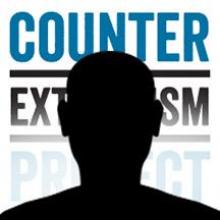
Head judge and deputy leader of al-Mourabitoun, which he represents in JNIM
AQIM senior leader in West Africa and the Sahel
Senior leader of Jama’at Nusrat Al-Islam Wal-Muslimin, founder of Macina Liberation Front
Commander, Mopti Region
Commander, Kidal Region

Spokesman
Commander, Timbuktu Emirate
Emir of Timbuktu

Finance Director

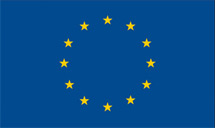
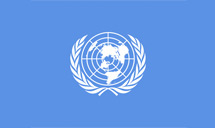
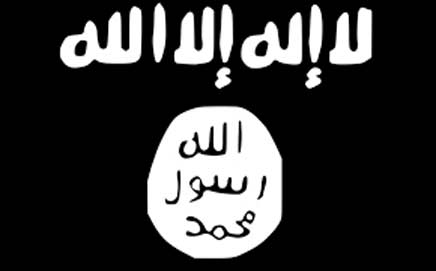
For two years following JNIM’s founding, al-Qaeda and ISIS militants across the Sahel united under a common banner to expel Western forces from the region. According to military leaders from the United States, France, and West Africa, the militants carried out increasingly forceful attacks targeting villages and army bases. However, on May 8, 2020, it was reported in ISIS’s weekly al-Naba newspaper that al-Qaeda started a “war” against ISIS militants in West Africa. Al-Naba criticized JNIM’s leadership, specifically Iyad Ag Ghaly and Amadou Kouffa, for undermining jihad in favor of negotiating with the Malian government. JNIM sought to diffuse the tension by releasing booklets—indirectly targeted at ISIS sympathizers skeptical of JNIM’s motives—calling for unity among all jihadists. Danielle Paquette and Joby Warrick, “Al-Qaeda and Islamic State Groups Are Working Together in West Africa to Grab Large Swaths of Territory,” Washington Post, February 22, 2020, https://www.washingtonpost.com/world/africa/al-qaeda-islamic-state-sahel-west-africa/2020/02/21/7218bc50-536f-11ea-80ce-37a8d4266c09_story.html; Thomas Joscelyn and Caleb Weiss, “Analysis: Islamic State Claims Al Qaeda Started a War in West Africa,” Long War Journal, May 8, 2020, https://www.longwarjournal.org/archives/2020/05/analysis-islamic-state-claims-al-qaeda-started-a-war-in-west-africa.php; Caleb Weiss, “Analysis: JNIM Addresses Detractors, Sends Message of Unity,” Long War Journal, February 10, 2020, https://www.longwarjournal.org/archives/2020/02/analysis-jnim-addresses-detractors-sends-message-of-unity.php
On May 7, 2020, ISIS revealed in al-Naba that it engaged in tense clashes with al-Qaeda militants in Mali and Burkina Faso. ISIS accused JNIM of instigating the violence as the jihadist camp allegedly mobilized large forces to attack and prevent supplies from getting to ISIS strongholds in Mali and Burkina Faso. According to ISIS, JNIM amped up attacks beginning April 17. Unverified claims from JNIM sources insist that ISIS proposed a ceasefire on May 5, but it was rejected by JNIM. Furthermore, on May 28, ISIS released a statement on Telegram claiming that the COVID-19 pandemic served as punishment for the forces that have fought against ISIS. Additionally, ISIS spokesman Abu Hamza al-Qurashi claimed that ISIS would retaliate against al-Qaeda in Africa due to attacks initiated by the latter insurgent camp. Although specific countries are not listed, Mali and Burkina Faso have since seen increasingly hostile clashes between ISIS and JNIM forces.Mina al-Lami, “Africa’s Sahel Becomes Latest al-Qaeda–IS Battleground,” BBC News, May 11, 2020, https://www.bbc.com/news/world-africa-52614579; Hassan I. Hassan, Twitter post, May 27, 2020, 5:54 p.m., https://twitter.com/hxhassan/status/1266019995659702273.
Ansarul Islam is a Burkinabe splinter group of JNIM.“EU Fight against Terrorism: One Group and Three Individuals Added to the EU Sanctions List over Terrorism,” Council of the European Union, June 20, 2022, https://www.consilium.europa.eu/en/press/press-releases/2022/06/20/eu-fight-against-terrorism-one-group-and-three-individuals-added-to-the-eu-sanctions-list-over-terrorism. Ibrahim Malam Dicko was an ethnic Peul commander who founded the local insurgency in the northern provinces of Burkina Faso in 2016.“Ansaroul Islam,” Center for International Security and Cooperation, Stanford University, accessed August 6, 2022, https://cisac.fsi.stanford.edu/mappingmilitants/profiles/ansaroul-islam. As of 2022, Ansarul Islam primarily consists of Peul fighters who mostly carry out attacks in northern and eastern Burkina Faso as well as near the borders of Mali and Niger.“EU Fight against Terrorism: One Group and Three Individuals Added to the EU Sanctions List over Terrorism,” Council of the European Union, June 20, 2022, https://www.consilium.europa.eu/en/press/press-releases/2022/06/20/eu-fight-against-terrorism-one-group-and-three-individuals-added-to-the-eu-sanctions-list-over-terrorism; “Ansaroul Islam,” Center for International Security and Cooperation, Stanford University, accessed August 6, 2022, https://cisac.fsi.stanford.edu/mappingmilitants/profiles/ansaroul-islam.
According to media sources, Ibrahim Dicko died in May 2017 of thirst and exhaustion following a French-led raid on the jihadist group’s hideout in Foulsaré forest. Jafar Dicko, who was reportedly influenced by Amadou Koufa, the leader of Katibat Macina, quickly replaced his brother. Scholars on the region claim that Dicko lacks his brother’s leadership skills, leading to less activity from the group.Pauline Le Roux, “Ansaroul Islam: The Rise and Decline of a Militant Islamist Group in the Sahel,” Africa Center for Strategic Studies, July 29, 2019, https://africacenter.org/spotlight/ansaroul-islam-the-rise-and-decline-of-a-militant-islamist-group-in-the-sahel.


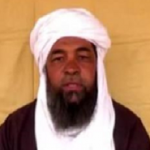
Get the latest news on extremism and counter-extremism delivered to your inbox.